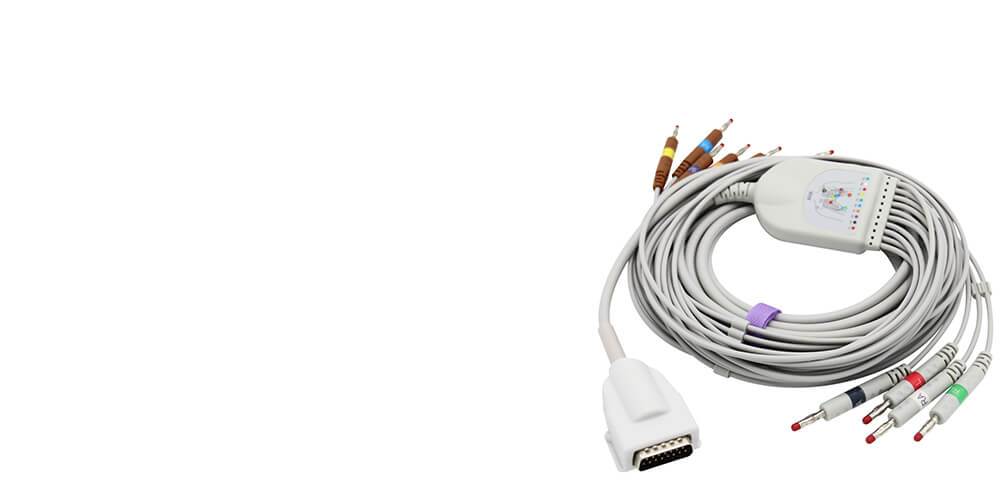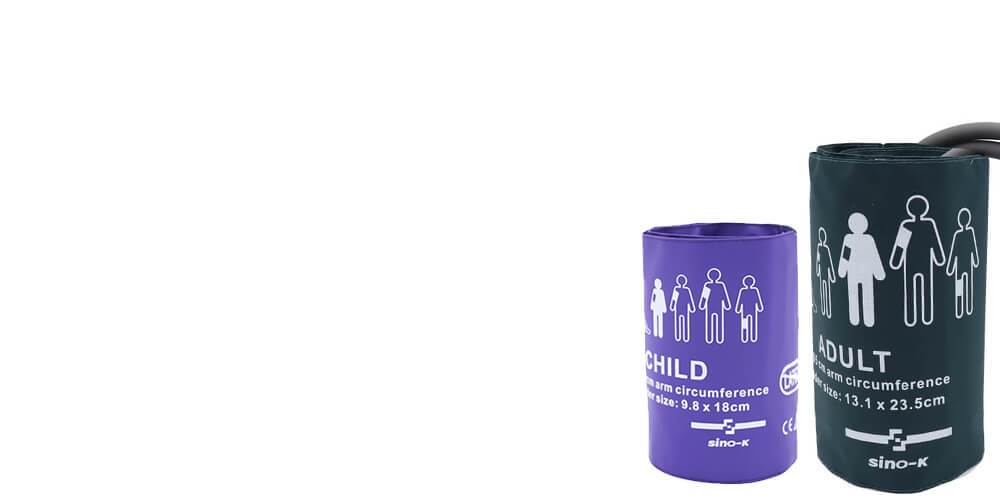You have no items in your shopping cart.
What is the SpO2 Sensors?
The SpO2 Sensor is used in making Pulse oximetry to a pulse oximeter, which is a test that measures what proportion of the oxygen-carrying molecules in the blood (called hemoglobin) are actually carrying oxygen.

A pulse oximeter is a medical device that indirectly measures the oxygen saturation of a patients blood (as opposed to measuring oxygen saturation directly through a blood sample) and changes in blood volume in the skin, producing a photoplethysmograph. It is often attached to a medical monitor so staff can see a patients oxygenation at all times. Now, there is a portable battery-operated pulse oximeters are also available for home blood-oxygen monitoring.
What is made up of the SpO2 Sensor?
A SpO2 Sensor Internally it consist of IR LED, Red LED and Light detector. Same has been brought out to the connector as shown below in sensor internal connections.

Also different monitoring come to different connectors.

How does a spo2 sensor work?
The SpO2 sensor works out the oxygen saturation by comparing how much red light and infra red light is absorbed by the blood. Depending on the amounts of oxy HbO2 and deoxy Hb present, the ratio of the amount of red light absorbed compared to the amount of infrared light absorbed changes.


What is the normal SpO2 level?

There are two types of Spo2 Sensors:

Why we use the Disposable Spo2 Sensors?
- Comfortable fit and light weight for patient satisfaction
- Single patient use to help hospital efforts to reduce hospital-acquired infections
- Bedside monitoring, telemetry, and neurology patients benefit from the same, accurate technology
- Bright LED technology provides more accurate measurement for thicker fingers or skin with darker pigmentation
- Easy to apply with full-range of sizes, from neonate to adult
- Neonatal Dual-SpO2 for detecting duct-dependent congenital heart diseases in the newborn—dual SpO2 is simplified with Smart Cable—just plug and measure

- Comfortable fit and light weight for patient satisfaction with highly reliable measurement
- Multi-site probe, can be used for neonate foot as well as adult fingers
- Finger-tip probe, covers less area of the finger and gives the patient more freedom for finger movement
-
Water resistant and washable, a clean probe can be used for every measurement
-
Bright LED technology provides more accurate measurement for thicker fingers or skin with darker pigmentation
Related Posts
What is the SpO2 Sensors?
The SpO2 Sensor is used in making Pulse oximetry to a pulse oximeter, which is a test that measures what proportion of the oxygen-carrying molecules in the blood (called hemoglobin) are actually carrying oxygen.

A pulse oximeter is a medical device that indirectly measures the oxygen saturation of a patients blood (as opposed to measuring oxygen saturation directly through a blood sample) and changes in blood volume in the skin, producing a photoplethysmograph. It is often attached to a medical monitor so staff can see a patients oxygenation at all times. Now, there is a portable battery-operated pulse oximeters are also available for home blood-oxygen monitoring.
What is made up of the SpO2 Sensor?
A SpO2 Sensor Internally it consist of IR LED, Red LED and Light detector. Same has been brought out to the connector as shown below in sensor internal connections.

Also different monitoring come to different connectors.

How does a spo2 sensor work?
The SpO2 sensor works out the oxygen saturation by comparing how much red light and infra red light is absorbed by the blood. Depending on the amounts of oxy HbO2 and deoxy Hb present, the ratio of the amount of red light absorbed compared to the amount of infrared light absorbed changes.


What is the normal SpO2 level?

There are two types of Spo2 Sensors:

Why we use the Disposable Spo2 Sensors?
- Comfortable fit and light weight for patient satisfaction
- Single patient use to help hospital efforts to reduce hospital-acquired infections
- Bedside monitoring, telemetry, and neurology patients benefit from the same, accurate technology
- Bright LED technology provides more accurate measurement for thicker fingers or skin with darker pigmentation
- Easy to apply with full-range of sizes, from neonate to adult
- Neonatal Dual-SpO2 for detecting duct-dependent congenital heart diseases in the newborn—dual SpO2 is simplified with Smart Cable—just plug and measure

- Comfortable fit and light weight for patient satisfaction with highly reliable measurement
- Multi-site probe, can be used for neonate foot as well as adult fingers
- Finger-tip probe, covers less area of the finger and gives the patient more freedom for finger movement
-
Water resistant and washable, a clean probe can be used for every measurement
-
Bright LED technology provides more accurate measurement for thicker fingers or skin with darker pigmentation
Related Posts














Newer Post →